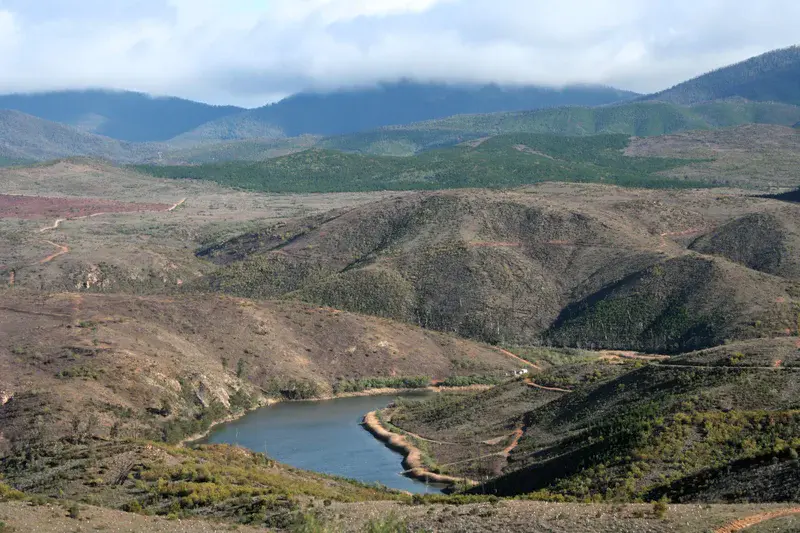
Cotter River: from fire to flow
by Antonio Jordán, University of Seville, Sevilla, Spain
First, in English:
Panoramic view of the Cotter River near Canberra, Australia, taken in 2009, showing the recovery of the landscape after the 2003 bushfires, with vegetation in the process of regeneration.
The Canberra bushfires of 2003 were a series of intense wildfires that ravaged the Australian Capital Territory and surrounding regions. Triggered by extreme drought conditions, soaring temperatures, and gusty winds, the fires spread rapidly and overwhelmed firefighting capacities. Over several harrowing days, the blaze destroyed more than 500 homes, took four lives, and damaged critical infrastructure including power lines and reservoirs. Ecologically, it led to the loss of vast areas of native bushland and disrupted habitats vital to Australia's unique wildlife. The environmental toll was coupled with significant economic repercussions, ranging from the costs of emergency response and property reconstruction to long-term impacts on tourism and public health. The recovery demanded years of regeneration and community rebuilding, with nature slowly reclaiming what was lost.
Ahora, en español:
Panorámica del río Cotter cerca de Canberra, Australia, tomada en 2009, mostrando la recuperación del paisaje tras los incendios forestales de 2003, con vegetación en proceso de regeneración.
Los incendios forestales de Canberra en 2003 fueron una serie de fuegos intensos que arrasaron el Territorio de la Capital Australiana y regiones cercanas. Provocados por condiciones de sequía extrema, altas temperaturas y vientos fuertes, los incendios se propagaron rápidamente y superaron la capacidad de respuesta de los equipos de extinción. Durante varios días angustiosos, las llamas destruyeron más de 500 viviendas, provocaron la muerte de cuatro personas y dañaron infraestructuras clave como líneas eléctricas y embalses. Desde el punto de vista ecológico, supusieron la pérdida de vastas zonas de vegetación nativa y la alteración de hábitats esenciales para la fauna australiana. A este impacto ambiental se sumaron consecuencias económicas significativas, que incluyeron los costes de la emergencia, la reconstrucción de propiedades y los efectos a largo plazo sobre el turismo y la salud pública. La recuperación exigió años de regeneración y reconstrucción comunitaria, mientras la naturaleza comenzaba a reclamar lo perdido.
Categories
Location
- Oceania (238)
- Australia and New Zealand (224)
- Australia (96)
- Exact location (148.9056 E, -35.3423 S)
Tags
Colours
Image properties
2496 × 1664 px;
image/jpeg; 1.1 MB
Camera:
Canon EOS 350D DIGITAL
Taken on 3
July
2009
Submitted on 9 July 2025
Licence
Creative Commons Attribution 3.0 Unported (CC BY 3.0)
Credit
Antonio Jordán (distributed via imaggeo.egu.eu)
Share
Appreciate
Report